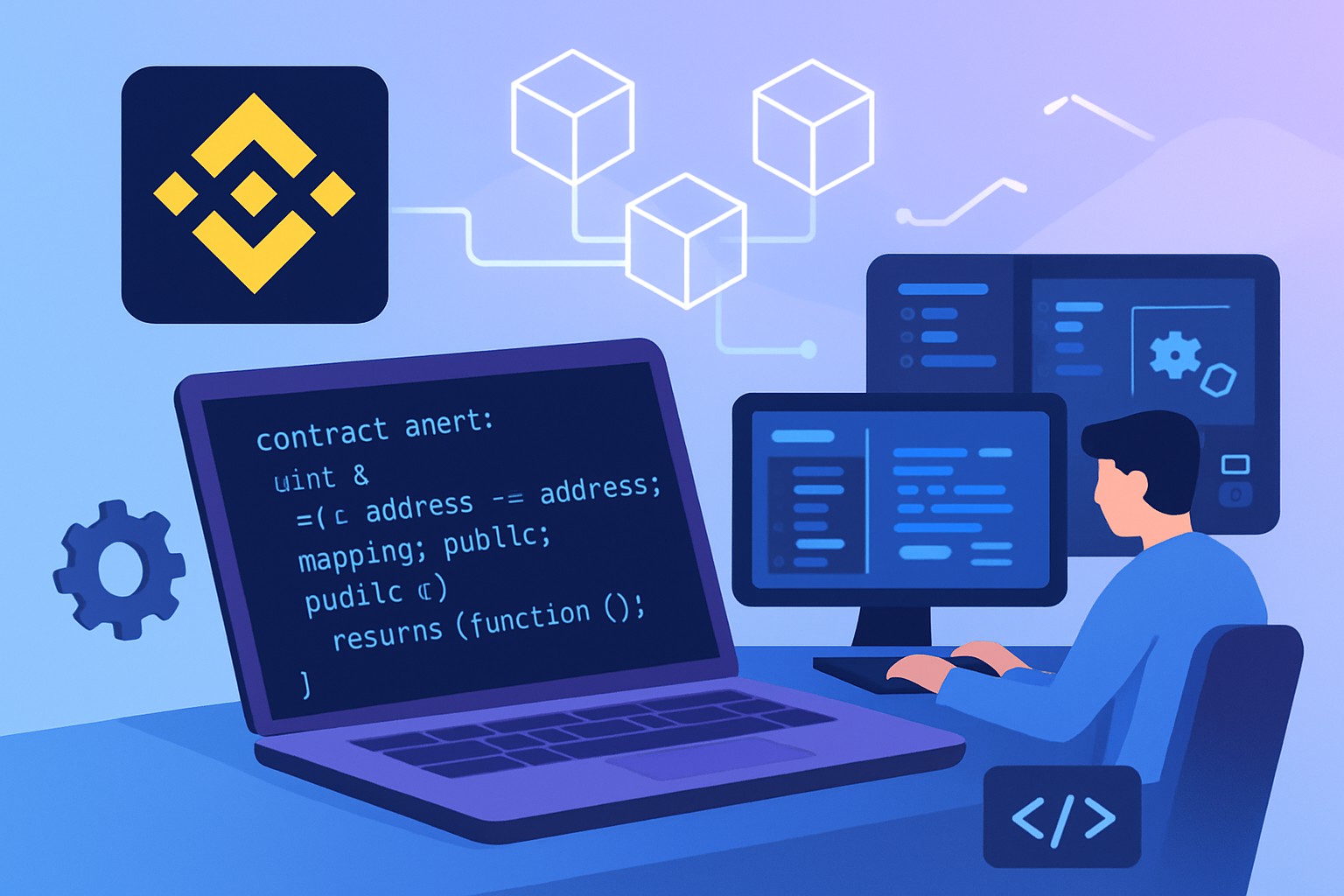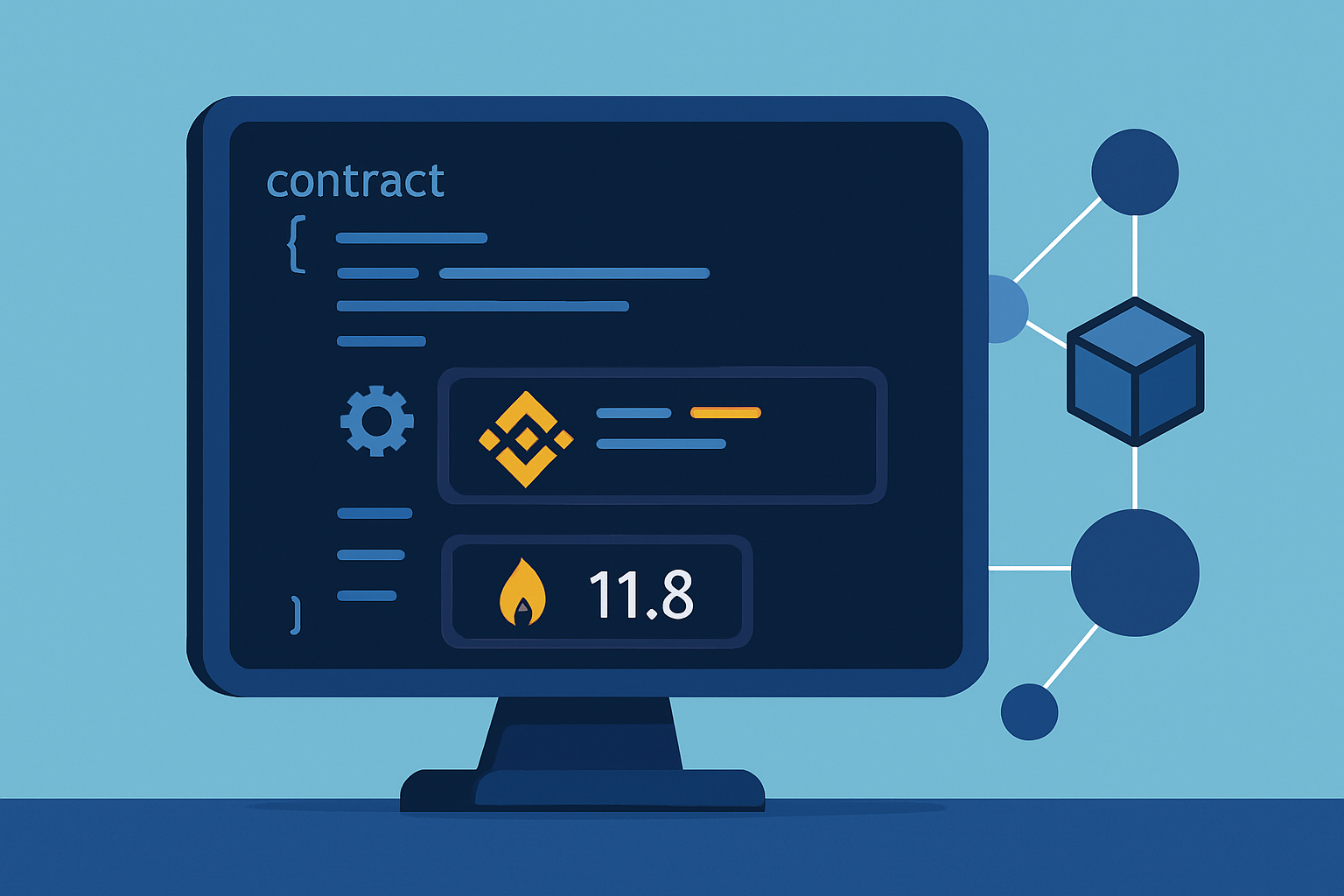How Binance Smart Chain Works for Developers


Binance Smart Chain (BSC) quickly won over developers working on decentralized applications (dApps). It boasts speedy transaction times and wallet-friendly fees and works hand in glove with Ethereum’s ecosystem, making it a go-to spot for scalable and affordable blockchain development.
Getting to Know Binance Smart Chain The Essentials You Should Definitely Have on Your Radar
Binance Smart Chain is a blockchain platform with a dual-chain setup that makes it easy for users to move assets between Binance Chain and BSC. Binance Chain focuses on speedy asset trading while BSC runs smart contracts thanks to its Ethereum Virtual Machine compatibility. It uses the Proof of Staked Authority consensus mechanism which generally achieves quick finality and keeps developer fees low.
- Binance Chain is all about lightning-fast decentralized trading but is light on the smart contract side of things.
- Binance Smart Chain steps up the game by adding Ethereum-compatible smart contract features with much more programmability.
- Validators are the individuals who make sure blocks get validated and consensus is reached using a Proof of Staked Authority system.
- Delegators pitch in by staking their BNB tokens to support these validators and earn rewards along the way—a bit like a trusty sidekick getting their due.
- Thanks to cross-chain compatibility assets and data can move smoothly between Binance Chain and BSC, making the ecosystem feel connected.
How to Set Up Your Development Environment for BSC (Without Losing Your Mind)
Get your local environment ready for development on Binance Smart Chain by installing essential tools like Node.js and choosing a development framework that suits your style. Truffle, Hardhat and Remix IDE all fit the bill. This setup makes it easy to write, test and deploy smart contracts while keeping your projects connected to the BSC networks.
Kick things off by installing the MetaMask browser extension then set it up to connect with Binance Smart Chain by adding the right RPC endpoints. It is easier than it sounds once you get the hang of it.
Configure the RPC endpoints for both the BSC testnet and mainnet so you’ll be ready to deploy and tinker during both development and production without breaking a sweat.
Choose your favorite Ethereum-compatible development framework like Truffle or Hardhat depending on what vibes best with your project’s needs. Picking the right tool early saves a headache later.
Finally, install the SDKs and libraries that play nicely with BSC such as Web3.js, ethers.js or the Binance Chain SDK. These will be your go-to for handling blockchain interactions smoothly no sweat.
Writing and Deploying Smart Contracts on Binance Smart Chain A Handy Guide
Writing smart contracts for BSC means working with Solidity, the same language that powers Ethereum since BSC works with the Ethereum Virtual Machine. This compatibility makes it easy for developers to tweak their existing Ethereum contracts without breaking a sweat. For compiling, you will use familiar tools like Remix, Hardhat or Truffle. It is a good idea to watch gas optimization tailored to BSC's unique network quirks before you deploy.
Kick things off by writing a simple Solidity smart contract—something like a token or a voting contract—to get a good feel for the syntax and the underlying logic. It’s a great way to ease into the world of smart contracts without getting overwhelmed.
Next, compile and test your contract locally using handy tools like Remix IDE or Hardhat test networks. Catching those pesky errors early on saves you a lot of headaches down the road.
When you’re ready, deploy your contract to the BSC testnet first for some real-world practice. Once you’re feeling more confident—and hopefully a bit braver—you can take the plunge and deploy on the mainnet.
Don’t forget to keep an eye on gas fees during deployment by checking the current conditions on the BSC network. It’s a subtle art, balancing cost and speed to make sure your transactions go through without burning a hole in your wallet.

How to Easily Work with Deployed Contracts Using Web3 and BSC SDKs
When connecting your front-end apps to Binance Smart Chain, most people tend to rely on Web3.js or ethers.js libraries. These handy tools make interacting with smart contracts feel almost effortless.
- Connect to BSC nodes by leaning on public RPC providers or dedicated infrastructure—this way you keep latency low and reliability high while avoiding annoying slowdowns.
- Use contract ABI definitions to read and parse contract data to ensure updates are spot on and happen in real time.
- Send transactions by carefully preparing wallet signatures and managing nonces like a pro to dodge errors during contract interactions.
- Handle contract events and logs efficiently to track state changes and keep the user interface snappy and responsive.
How to Test and Debug DApps on Binance Smart Chain (Without Pulling Your Hair Out)
Testing and debugging are absolutely vital when cooking up DApps on BSC. Developers usually turn to BSC testnets as their safe playground to tinker without any costly mistakes. Remix IDE often comes in handy to spot those pesky errors pronto, while blockchain explorers like BscScan let you keep a close eye on transaction statuses and unravel any mysteries around deployed contracts.
- Deploy contracts on the Binance Smart Chain Testnet without spending a dime of real BNB, giving you a safe playground to experiment and tinker.
- Quickly track down and squash contract bugs using Remix IDE’s handy built-in Solidity tools.
- Keep an eye on transaction confirmations and contract activity over at BscScan, so you can gauge performance and catch any sneaky issues before they become headaches.
- Build solid automated tests with popular frameworks like Hardhat and Truffle to keep your contracts rock-solid and avoid those nasty regressions that can sneak up on you.
How to Give Your BSC DApp a Performance Boost and Cut Costs Without Breaking a Sweat
Cutting down gas usage and boosting DApp performance can seriously reduce costs on Binance Smart Chain and make the experience smoother for users. Developers usually focus on writing smart contracts efficiently and avoid needless state changes. They also move heavy calculations off-chain whenever possible.
- Design smart contracts with modular, reusable code to chop down on redundancy and sneakily trim gas costs.
- Keep the number of state variables on the lean side to cut storage expenses and speed up those transactions.
- Shift heavy-duty computations off-chain or onto layer-2 solutions whenever possible to dodge the burdens of on-chain processing.
- Use batching techniques to bundle multiple operations into one slick transaction, often saving a pretty penny on gas fees.
Common Challenges Developers Encounter on Binance Smart Chain and Some Handy Ways to Tackle Them
Developers working on Binance Smart Chain often find themselves navigating hurdles like network congestion, sneaky compatibility quirks and lurking security risks. Catching these issues early can save the day. It lets you roll out fixes like gas optimization, detailed contract audits, reliable cross-chain bridges and straightforward troubleshooting tips.
- Keep network congestion in check by monitoring gas prices closely and timing your transactions for quieter moments when the network isn’t busy.
- Run thorough security audits on smart contracts by blending automated tools with expert scrutiny to spot and squash any lurking risks.
- Navigate cross-chain compatibility by relying on trusted bridges and applying interoperability standards carefully.
- When deployment errors occur, dive into detailed logs and trace errors with persistence. Don’t hesitate to tap into BSC developer communities and official documentation for help.





